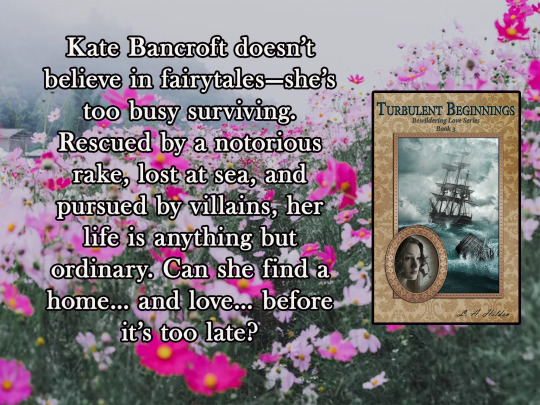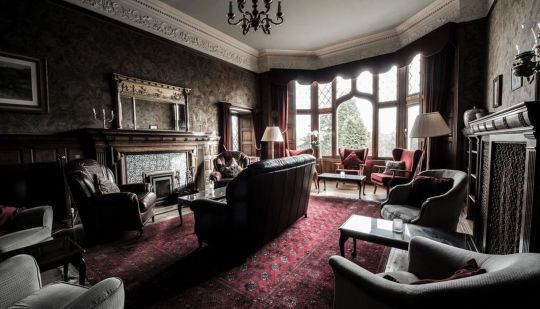Text

London’s Quest https://a.co/d/9qJZe2T
#regency#books#ebooks#fiction#romance#smashwords#time travel#London's Quest#L.A. HIlden#historical#amazonbooks#barnes and noble#applebooks#draft2digital#readers#book lovers#bookworms#book readers
0 notes
Text










Set along the River Avon in Banffshire, Scotland, Ballindalloch Castle has been home to the Macpherson-Grant family since the mid-16th century. Originally a turreted Z-plan fortress with circular towers, it’s been expanded and restored over centuries from damage by Royalists in 1645 to Victorian-era renovations and modern updates.
Inside, the castle features a paneled library, smoking room, tower nursery, and a grand dining room that once served as the Great Hall. A spiral staircase leads to the top of the original tower, while the old dungeon now houses wine.
The estate also includes an 18th-century dovecote, a courtyard garden, a laburnum arch, and the Ballindalloch Single Malt Distillery; offering tours and tastings. While the castle is currently closed to the public, visitors can usually enjoy garden walks, a tea room, and family-friendly spaces when open.
Photo credits to: Ronnie Leask, Anne Burgess, Mike Garlick, And Andrew Tyron
1 note
·
View note
Text

#quote of the week#albert einstein#opportunity#spiritual quotes#life quotes#motivational quotes#theoretical physicist
1 note
·
View note
Text

https://lahilden.com/born-reckless/
#books#fiction#ebooks#regency#history#romance#smashwords#book lovers#regency romance#romance readers#Born Reckless#L.A. Hilden#enemies to lovers#forced proximity#good omens fiction#love and deception#bookish#drama#humor
2 notes
·
View notes
Text






Tucked away on Scotland’s Isle of Mull, just south of Craignure, Torosay Castle began as a Baronial home built in the 1820s by Colonel Campbell. His son John later replaced it with a grand Victorian mansion completed in 1858.
Financial troubles led to the sale of the estate—then 14,000 acres—to Arbuthnot Guthrie, who expanded it further for sport and leisure. The castle, originally known as Duart, was renamed Torosay in 1911 after the original Duart Castle was sold.
Throughout the 20th century, Torosay changed hands, became a short-lived hotel, and was eventually opened to the public for tours and restoration. In 2012, the estate was sold to Donald McLean, who closed the castle for private renovation.
Today, the estate spans 12 acres and features rose-covered terraces, formal gardens, a statue walk, landscaped grounds, and the haunting remains of the Campbell family mausoleum. While the castle itself remains private, the gardens are occasionally open to visitors.
#castles#scottish castles#scotland#Eddy Lloyd Photo#isle of mull#Torosay Castle#baronial home#gardens#AllisterCombePhoto
13 notes
·
View notes
Text

#QuoteOfTheWeek #NelsonMandela #lifequotes #spiritualquotes #motivationalquotes #FormerSouthAfricanPresident #activist #politician
#quote of the week#nelson mandela#life quotes#spiritual quotes#motivational quotes#activist#former South African president
0 notes
Text

https://lahilden.com/a-necessary-heir/
#fiction#books#regency#ebooks#history#england#romance#smashwords#A Necessary Heir#L.A. Hilden#bloggers#readers#bookworms#book lovers
0 notes
Text










Earlshall Castle, located in Fife, Scotland, was built in 1546 by Sir William Bruce of Earlshall (not to be confused with the later architect of the same name). Mary, Queen of Scots, is said to have visited the castle in 1561. The castle features eight reception rooms, ten bedrooms, six bathrooms, two dressing rooms, a great hall, and a long gallery with a renowned painted ceiling depicting coats of arms, mottoes, and allegorical figures.
Built with a central block, offset towers, and unusually large windows for its time, Earlshall blended residential comfort with defensive features. Musket loops and small strategically placed windows offered protection during potential attacks, replacing the need for traditional narrow arrow slits.
The estate spans 53 acres and includes multiple outbuildings, a five-car garage, three cottages, an arched gatehouse, a courtyard, and a celebrated walled garden. The garden, enclosed by ancient stone walls, contains a formal topiary lawn, rose terrace, orchard, yew walk, bowling green, and a "secret garden," all framed by sculpted yew trees and holly hedges.
The Bruce family line ended in 1708, after which the estate passed to the Hendersons of Fordell. The property was sold in 1824 and fell into decline until Robert restored it in 1890 under the guidance of renowned architect Sir Robert Lorimer.
Earlshall Castle remains privately owned today, though the gardens are occasionally open to the public during select events and open days.
0 notes
Text

0 notes
Text

https://lahilden.com/turbulent-beginnings/
#books#fiction#ebooks#romance#smashwords#amazon books#Turbulent beginnings#LA Hilden\#barnes and noble#book lovers#bookworms#historical romance#abduction#heiress#books2read
0 notes
Text










Kildrummy Park Castle Hotel is located near Alford in Aberdeenshire, Scotland. The existing Jacobean-style mansion was built in 1901 by Colonel James Ogston, a wealthy soap manufacturer, who demolished the earlier structure to construct a more opulent residence. The house served as a private home until the 1950s, when James and Hylda Smith purchased the estate in 1954 and converted it into a hotel. They also established a charitable trust to maintain the gardens.
The 16-room hotel, featuring en-suite bathrooms, overlooked the ruins of the original 13th-century Kildrummy Castle. The interior embraced the traditional Scottish hunting lodge style, with oak wood paneling, chandeliers, wall tapestries, historic paintings, and a grand staircase adorned with carved wooden lion heads.
The wider 5,500-acre estate included the Kildrummy Castle Hotel, a four-bedroom modern home, twelve smaller outbuildings and cottages, stables, a pub, a wind farm, tenured farms, and commercial forestry.
The hotel permanently closed in 2017 after being purchased by American owners who began converting it into a private residence. The adjacent Kildrummy Castle Gardens were also closed to the public in 2021. However, the historic ruins of Kildrummy Castle, managed by Historic Environment Scotland, remain seasonally open to the public. The hotel no longer operates, and there is no public restaurant on the premises.
0 notes
Text

https://lahilden.com/dimensional-shift/
#quote of the week#books#fiction#life quotes#spiritual quotes#timetravel#dimensional shift#fictional characters#Aria Chandler
0 notes
Text

https://lahilden.com/the-vengeful-earl/
#books#ebooks#fiction#romance#regency#england#historical romance#bookworms#book lovers#revenge#The Bewildering Love series#The Vengeful Earl#LA HIlden#second chances#napoleonic wars
1 note
·
View note
Text

4 notes
·
View notes
Text










Bamburgh Castle is located in the village of Bamburgh in Northumberland, England. The 6th century kings of Northumbria chose Bamburgh as their royal capital. The castle is located 150 feet above the coastline and is connected to the North Sea by a natural harbor. In the 11th century, the Normans built a new castle on the site, which forms the core of the present one.
Bamburgh became the property of King Henry II in the 12th century when it served as an outpost. Northumbria has a history of being invaded by rival kingdoms and served as an important border garrison. Bamburgh served as a palace for monarchs for centuries and hosted kings and prisoners. In 1610, the castle was gifted by King James I to Claudius Forster, but unable to afford the upkeep, the castle fell into ruin. The bankrupt estate and deteriorated castle were restored by the Crewe Trustees.
The castle has served as a pharmacy, an outpatient surgery center, a hospital, and a free school for the underprivileged. Trustee, Dr. Sharp turned the castle into a coastguard station, but the castle still suffered financial difficulties and was put on the real estate market. Bamburgh was purchased by Engineer, William George Armstrong in 1894. Armstrong transformed and renovated the castle, which boasts artwork and ceramics, but unfortunately, he never saw the castle’s final transformation. Bamburgh Castle is one of the largest inhabited castles in the country and remains in the Armstrong family holdings. The castle has a king’s hall, State Rooms, a keep, an armory, Victorian stables, a library, a dungeon, and museums of Architecture and Aviation. It hosts weddings and events and has self-catering holiday accommodations. Bamburgh Castle is open to the public and has two cafes.
3 notes
·
View notes
Text

https://lahilden.com/when-love-wins/
Haunted by war and drowning in laudanum, Warin Vanhorn, the Marquess of Wintergale, is a hero lost in his own nightmares. Helena Dabney, a strong-willed woman with an unexpected connection to his past, never imagined she’d cross paths with the man she once admired from afar. But fate has a way of forcing two souls together—especially when danger, betrayal, and forbidden desires threaten to tear them apart. Can love truly win when the battle is far from over?
#quote of the week#life quote#spiritual quotes#when love wins#la hilden#fictional character#warin vanhorn#books#fiction#ebooks#romance#history#napoleonic era
0 notes
Text

Amidst the vibrant London season, Lady Evelyn Manning pursues authentic love, challenging Paxton Witley's guarded heart. As their connection deepens, they must navigate the perils of Napoleonic espionage that threaten their lives and reputations. https://a.co/d/a6TgGOi
#books#fiction#ebooks#regency#romance#smashwords#amazon books#barnes and noble#espionage#bookworms#writers on tumblr#LA Hilden#Bewildering Love series#book lovers#The Perfect Suitor
0 notes